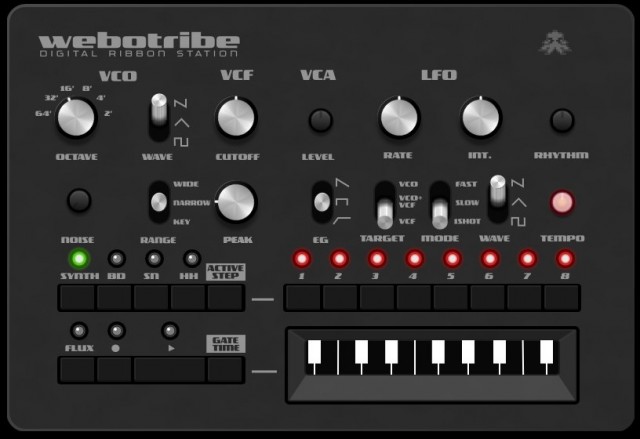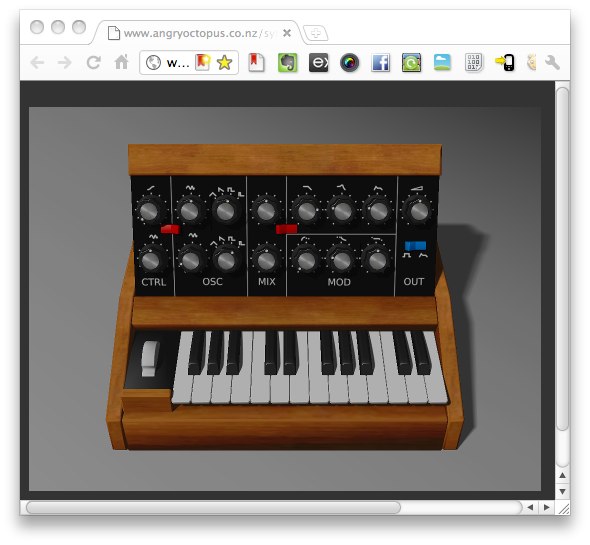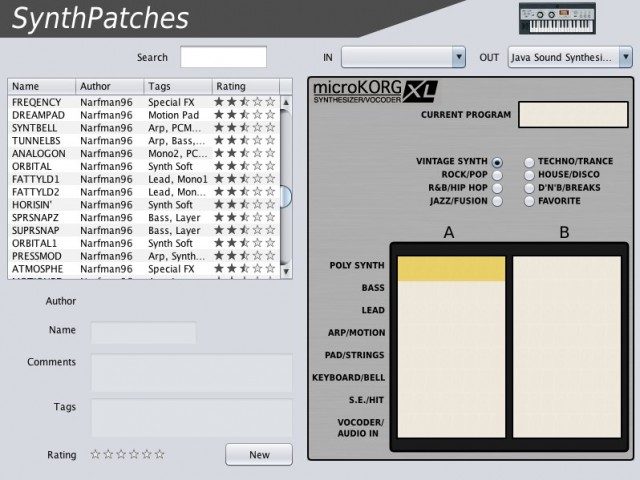The beauty of modeling an instrument is that it involves ideas – taking a design from one context and translating it to another. With software, we’re able to put sound-making things everywhere, from obscure game consoles to a tab in your web browser that can distract you with music instead of Facebook updates. In the process of moving those ideas from place to place, we discover things.
Just ask Shannon Smith. He’s been on a great tear emulating favorite synthesizers in free toys for the browser. Through the power of the Internet, the New Zealand-born, California-based developer heard from Japan-based Monotron designer, who shared tips like these:
– filter doesn’t sound nearly as aggressive at maximum peak.
– LFO is slower at minimum (about 15s period) and faster at maximum (>1kHz).
– monotron resets the LFO at the moment the ribbon is touched, so it
works like a simple cycling EG at slow LFO rates.
– monotron has fixed intensity keytrack. cutoff tracks ribbon position
by factor of two. only tracks ribbon not pitch knob.
(We get to enjoy a much cooler industry that keeps friendly, and leaves the competition more often to the engineering departments than to the legal departments.)

And so there’s something wonderful about getting to fiddle with squelchy sounds in the tab of Chrome or Firefox. A few examples:
“Webotron” (Korg Monotron)
“Webotribe” (not-even-out-yet Monotribe)
Yamaha CS01
A 4-op FM synth
A (mini) Minimoog
There are useful tools, too, like a Java patch editor for the microKORG XL. Amazingly, it can actually transmit MIDI to the keyboard:
microKORG XL
Shannon tells us a bit more about the development process…
How they were developed:
All Java (interface and sound). It’s not really possible to use flash to generate sound real-time with low latency. Java also has built-in MIDI support that works in your browser which is pretty handy.
I was curious if things like this would be useful on tablets (particularly if someone got them working with HTML5 in place of Java – it’s a bit sobering that our “futuristic” Web tech represents a step backward in some respects):
I have considered writing apps for tablets and have been meaning to look into it but can never find the time. Also the market seems pretty saturated with much better products than I could produce in my spare time.
Shannon’s background:
I studied Electronic Engineering at a university in New Zealand and now work full time as a developer for a GPS company in California.
The most important lessons learned by doing these:
Hmm, that’s a tough one. I guess an appreciation for just how hard it is to digitally generate good sounds from scratch. I assumed before I started writing synthesizers that doing it digitally would be trivially easy compared to the analog days. In the digital realm you can do things with a few keystrokes that would have taken dozens of components and hours to wire up physically. Unfortunately even though it’s easy to get something working quickly there are some rather nasty artifacts that creep in when you do things digitally that means you have to be very careful anything you do doesn’t generate frequencies outside of the limited range dictated by your sampling rate. Anything you generate that falls outside this range folds back down into the audio spectrum and makes it sound crap.
I’m actually supposed to be writing games in my spare time. I only started writing synthesizers because I thought it would be a way to have decent sounding music in my games and keep the download size very small. I started out trying to do a Nord Lead emulation but utterly failed and realized just how complicated it was to get a good sound. Even though it was a failure it was a lot of fun to try and I continued writing them and lately I’ve been writing many more synths than games, also I tend to finish (mostly) the synths which is something I can’t seem to do with games.
Lots more goodies to explore:
http://www.angryoctopus.co.nz/


